Ghost Story - (aka Madhouse Mansion) Special Edition
I thought I knew this film until I received the check disc and now realise I didn't. There are at least a half a dozen other 'Ghost Story' movies, including one featuring an aged Fred Astaire which was released in the early eighties. This pre-dates that one by a few years but the familiar sounding title may account for why it was released in other territories under a name ('Madhouse Mansion' in the US for example. I think William Castle's 'Ghost Story' TV show was pretty popular in the US at the time this came out). As a result, the film never really got the recognition it might have had and since its release seems to have sunk into un-happy oblivion until now. Nucleus Films have done the decent thing and dusted it off, re-mastered it (this isn't the 4:3 VHS print that was the only version previously available) and have produced and gathered together enough extras to justify its 'Special Edition' moniker.
Before I dip into the release itself, I'd like to summon a quick round of applause for Nucleus. In a world dominated by large corporations fixedly releasing only big budget movies with a guaranteed return, there are several independents, started and run by movie fans, for whom their releases are something of a labour of personal love. Nucleus's own PR states: "NUCLEUS FILMS is a DVD releasing company established by writer/film researcher Marc Morris and filmmaker Jake West with the intention of creating a high quality collector's film label for lovers of cinema run by people whose passion for film is equal to that of the fans." Their release programme covers the peripheries of horror and sexploitation, which can all be found at their site. We should all do what we can to support ventures like this one.Now back to 'Ghost Story', aka 'Madhouse Mansion'.
Three ex-public school boys re-unite for a week of shooting in the country. There's dopey but well-meaning Talbot (Larry Dann) , the prerequisite Brideshead-like dandy, McFadyen (Murray Melvin) and the mean-spirited Duller (Vivian Mackerall). Talbot is a bit bemused by the invite as he barely knew McFayden at college but he still thinks 'it's jolly good sport' that he's been invited along.
They arrive at a station where McFayden awaits with a car to pick them up. Eventually they arrive at the 'lodge', a disused house covered in cobwebs and dust sheets but they decide to make the best of it. From the outset it is clear that Talbot is looked down upon by the other two who seem to be up to something though it's not clear what. One example of their cruel mockery of Talbot is when they discover some nude photos hidden in a book and then pass the book to Talbot for a bit of night time reading. Curiously, it is only Talbot who seems to hear strange noises and voices in the house, and the re-appearance in varying places of a particularly spooky looking Victorian china doll. To begin with, it's easy to assume this was the work of the other two, though when Talbot starts to 'hallucinate' about the houses' past, witnessing first hand events that passed many years previously, you realise something genuinely spooky is afoot.
Talbot learns that Robert (Leigh Watson) had his sister Sophie (Marianne Faithful) committed to an asylum and he also learns that there seems to be some sort of incestuous attraction between the two which Robert appears to be fighting against.
The inclusion of Marianne Faithful is probably what gives the film its semi-cult status. She is certainly well cast as the slightly crazed but beautiful sister and, perhaps apocryphally, was right in the middle of the her 'heroin' years at the time which, given the performance here, is perfectly believable. She certainly looks strung out on occasion and the fact the film was shot on location in India would seem to suggest that availability of her favoured narcotic was probably greater than in London at the time.
When Sophie's governess Miss Rennie (a youthful looking Penelope Keith) travels to the asylum to beg for them to let her take Sophie away we learn that the owner, Dr. Borden, has sinister plans to poison all the patients and burn the asylum down for insurance money. Miss Rennie mistakenly sets all the patients free who then wreak their revenge on Dr. Borden.
Meanwhile, Talbot is dragged to the scene by the porcelain doll in a confusing mess of past meets present, eventually dancing into the night with Sophie.
His two so-called friends reveal that they had hoped to connect with the spirits themselves as they had heard rumours about the house, but neither experience what Talbot does.
What starts off as a decent and atmospheric film descends into a confusing narrative, not untypical of Hammer, Tigon and Amicus films of the day which seemed to go a bit 'art school' before their final demise (E.g. 'Scream and Scream Again').
Director Weeks had previously directed one notable horror, 'I, Monster' which itself was a disappointing mish-mash as it had started as a 3D movie but had its budget cut before filming ended. As a result, Weeks produced and directed this film under his own company to retain full creative control.
Film fans may like to know that one of the three principal men in the film, Vivian Mackerell who plays Duller, was the real-life 'Withnail', played in the film 'Withnail and I' by Richard E. Grant.
The eerie and highly effective score was created by Ron Geesin, who released an album ('The Body') with Pink Floyd's Roger Waters at around the time this film came out.
Overall, the film is an interesting period curio at best, using a lot of fish-eye lenses for good effect, and though the cast is very able, the narrative is just too oblique to provide a satisfyingly spooky yarn. In the end, it's all a bit of a mess.
Unfortunately, the check discs I received for the film were single-layer DVD-R's so I did not get access to all the extras. Weeks collection of 'shorts' are entirely superfluous, self-indulgent period curio's that look like they were made by a young Weeks at film school. The only two of note are 'Flesh' with its psychedelic close-ups of a female body, and '1917'.
I would like to have seen the documentary about the film which may have thrown some useful light at its darker spaces but, along with the PDF files, they were not on my disc so I cannot comment.
For the record, here is (supposedly) what you get on the final 2 disc version.
Two Disc Collector's Edition
Ghost Stories - an all-new 60 minute featurette including interviews with Director/Producer Stephen Weeks, Actors Larry Dann and Murray Melvin, British Horror Icon Barbara Shelley, composer (and Pink Floyd collaborator) Ron Geesin, with comments from UK critic Kim Newman.
Audio Commentary with Stephen Weeks, moderated by Professor Samuel Umland
Theatrical Trailer
The Chelsea Cobbler store commercial
Alternate opening credits sequence
Stephen Weeks' The Making of Ghost Story (.pdf)
Plus 7 previously unseen early short films
Owen's War (1965 / B+W / 10m)
Deserted Station (1965 / B+W / 7m)
The Camp (1965 / B+W / 4m)
Moods of a Victorian Church (1967 / Colour / 9m)
Two At Thursday (1968 / B+W / 10m)
1917 (1968 / Colour / 35m)
Flesh (1969 / Colour / 3m)
So overall, I have mixed feelings about this unusual film. I may need to watch it again before making up my mind fully. On first viewing though it didn't live up to my high expectations for a film of this type, from this era, particularly with such a strong cast.
Having said that, If it sounds like your bag, then you will never get a more complete version (replete with generous extras) so probably worth snapping up.
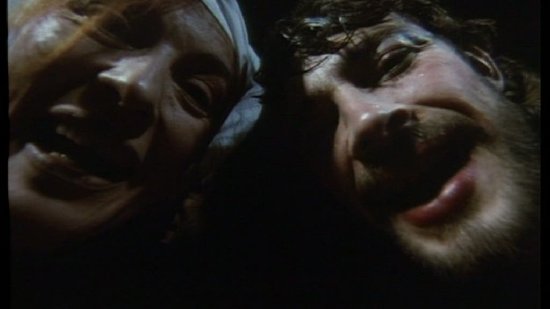
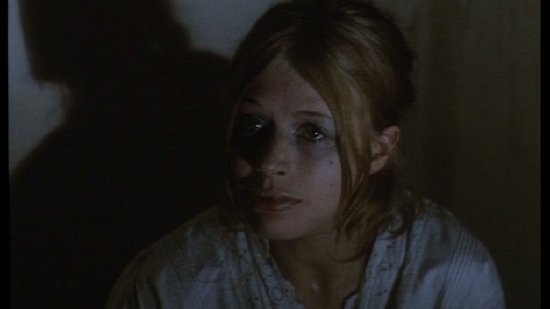
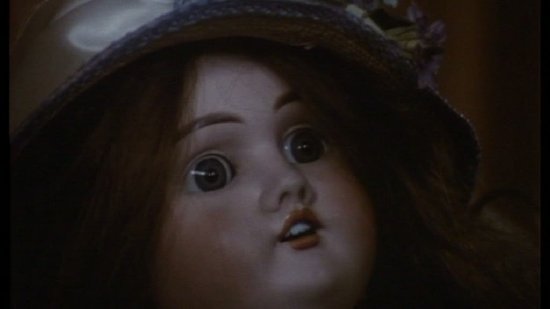
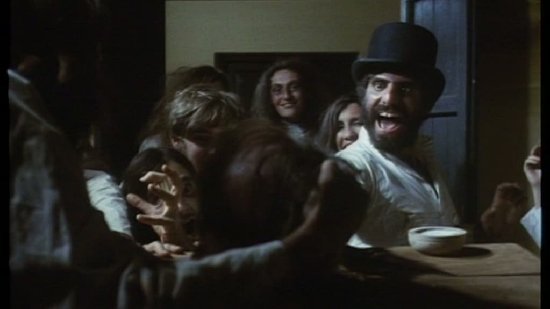
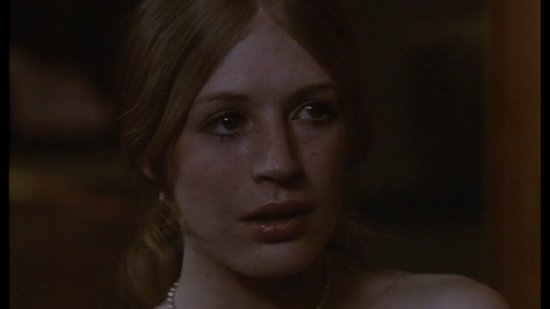
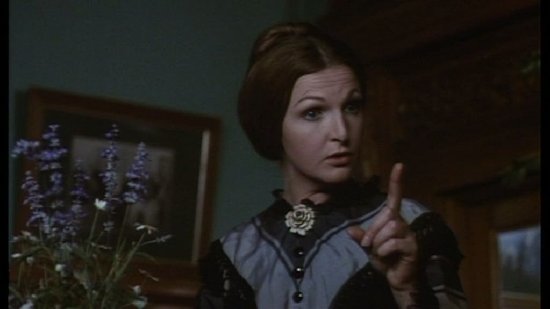
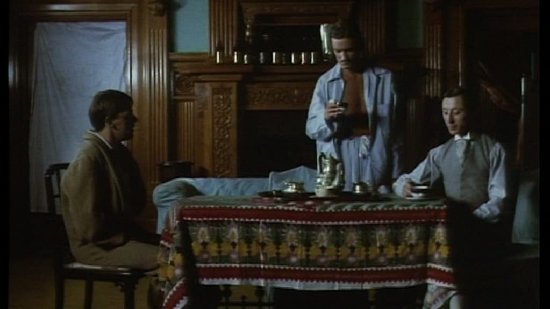
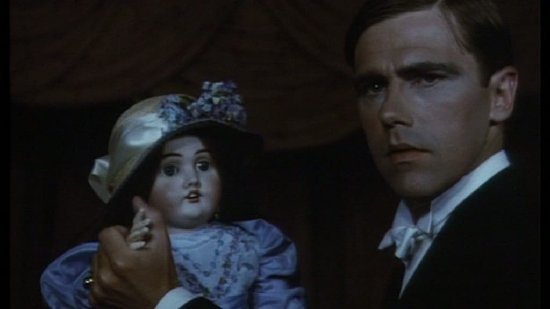

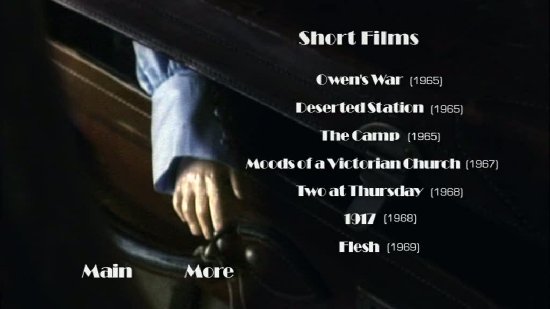

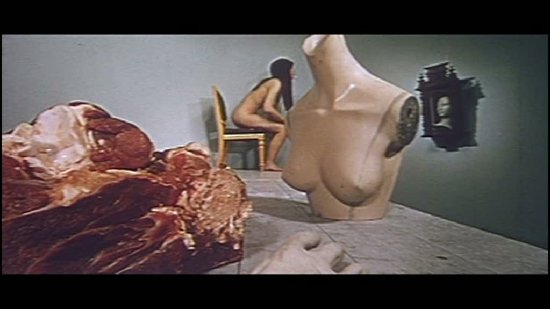
Your Opinions and Comments
Be the first to post a comment!